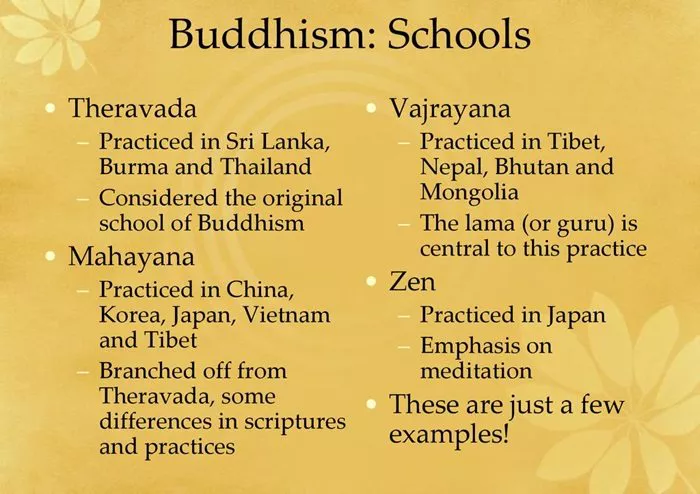Theravada Buddhism is one of the oldest and most traditional forms of Buddhism, mainly practiced in Sri Lanka, Thailand, Myanmar, Laos, and Cambodia. Monks in this tradition live a simple life dedicated to meditation, study, and helping others. This article explores the daily activities of a Theravada monk and provides a detailed insight into their practices.
The Morning Routine
Waking Up Early
Theravada monks wake up early, usually before dawn. The day starts with a period of silence and mindfulness. The early morning is a time for reflection and preparation for the day ahead. Monks typically wake up at 4:00 or 4:30 a.m., depending on the monastery’s schedule.
Morning Meditation
The first activity of the day is meditation. This practice helps monks center themselves, let go of distractions, and be present for the rest of the day. They focus on their breathing, practice mindfulness, and cultivate inner peace, which is crucial for their spiritual development.
Alms Round: Receiving Food
The Practice of Alms-Giving
After morning meditation, monks leave their monasteries for the daily alms round. This is a practice where they go to nearby villages or towns and receive food offerings from laypeople.
The Importance of Alms
In Theravada tradition, monks do not cook or buy food for themselves. Instead, they rely on the generosity of others. Laypeople offer food as a way to earn merit, a key concept in Buddhism. The food collected is taken back to the monastery and shared among the monks.
Spiritual Significance
The alms round is not just about collecting food; it is also a spiritual practice. Monks cultivate humility, gratitude, and detachment from worldly desires. This fosters a sense of community and interconnectedness.
Morning Chanting and Pujas
The Purpose of Chanting
After returning to the monastery, monks perform morning chanting and pujas. Chanting expresses devotion and reinforces Buddhist teachings.
Structure of the Pujas
Morning pujas involve offerings of incense, flowers, and candles in the presence of a Buddha statue. Monks recite prayers for the well-being of all sentient beings. This practice strengthens their commitment to the path of enlightenment.
Study and Teaching
Studying the Scriptures
Monks spend a significant part of their day studying the Pali Canon, the primary scriptures in Theravada Buddhism. This deepens their understanding of Buddhist philosophy and practice.
Teaching Others
Monks also engage in discussions with fellow monks and teachers. Teaching is an important duty, as many monks serve in monasteries and schools, passing on their knowledge to younger monks and laypeople.
Midday Meal and Rest
The Main Meal of the Day
After the morning’s activities, monks have their main meal around 11:00 a.m., just before noon. The food, received during the alms round, is simple, consisting of rice, vegetables, and fruits.
Mindful Eating
Monks eat mindfully, paying attention to each bite and expressing gratitude for the meal. This practice reinforces mindfulness and detachment from cravings.
Rest and Reflection
After the meal, monks may rest or take a short nap. However, excessive comfort is discouraged. This time is often used for personal reflection or study.
Afternoon Meditation
The Importance of Meditation
In the afternoon, monks engage in more meditation. This practice is essential for their spiritual development and helps them cultivate wisdom and insight.
Types of Meditation
Mindfulness Meditation (Sati) – Focuses on awareness of thoughts and surroundings.
Concentration Meditation (Samadhi) – Helps in deepening focus and stillness.
Walking Meditation – Involves mindful walking, focusing on each step.
Evening Chanting and Meditation
Evening Chanting
As the sun sets, monks gather for evening chanting. This session includes reciting the “Tisarana” (Three Refuges) and the “Panca Sila” (Five Precepts), reinforcing their vows.
Evening Meditation
After chanting, monks meditate again to reflect on the day’s activities and prepare for the following day. This session is a time for deeper contemplation and self-examination.
Special Ceremonies and Rituals
Participation in Community Events
In addition to their daily routine, monks take part in special ceremonies such as:
Vesak (Buddha’s birthday)
Kathina (a festival honoring monks)
Funeral rites and blessings
Strengthening the Lay-Monastic Relationship
These events foster a strong relationship between monks and laypeople, providing opportunities for spiritual growth and community support.
Social Work and Helping Others
Community Service
Monks are involved in social work such as:
Teaching in schools
Assisting in hospitals and orphanages
Engaging in charity work to help the poor and elderly
Practicing Compassion
These activities align with Buddhist principles of loving-kindness (metta) and compassion (karuna), demonstrating selflessness and service.
The Importance of Silence and Simplicity
A Life of Simplicity
Monks follow strict rules, known as the Vinaya, which govern their behavior and way of life. They live free from distractions and attachments, focusing entirely on their spiritual path.
Observing Silence
Silence is encouraged to maintain mindfulness and avoid unnecessary distractions, fostering a deeper connection with the Buddha’s teachings.
Conclusion
The daily life of a Theravada monk revolves around meditation, study, and service. Their strict routine fosters discipline, mindfulness, and spiritual growth. For laypeople, understanding a monk’s way of life can serve as an inspiration, demonstrating the value of simplicity, compassion, and self-awareness.
Theravada monks dedicate themselves to spiritual development and community service. Through mindful practices, they cultivate wisdom, ethical conduct, and mental clarity, embodying the core principles of Buddhism and guiding others toward enlightenment.

